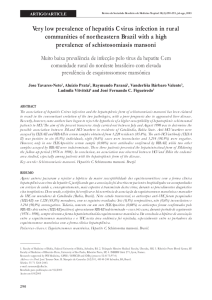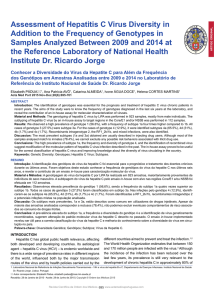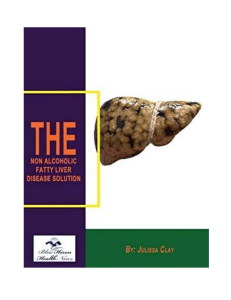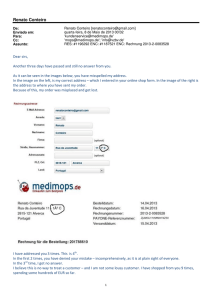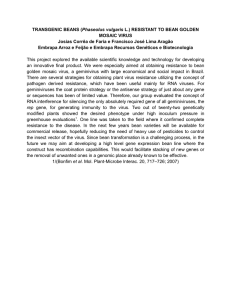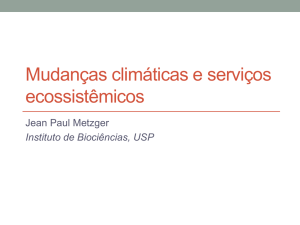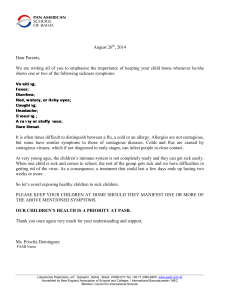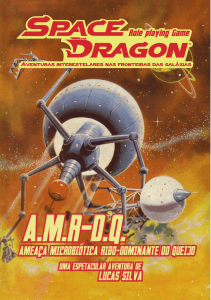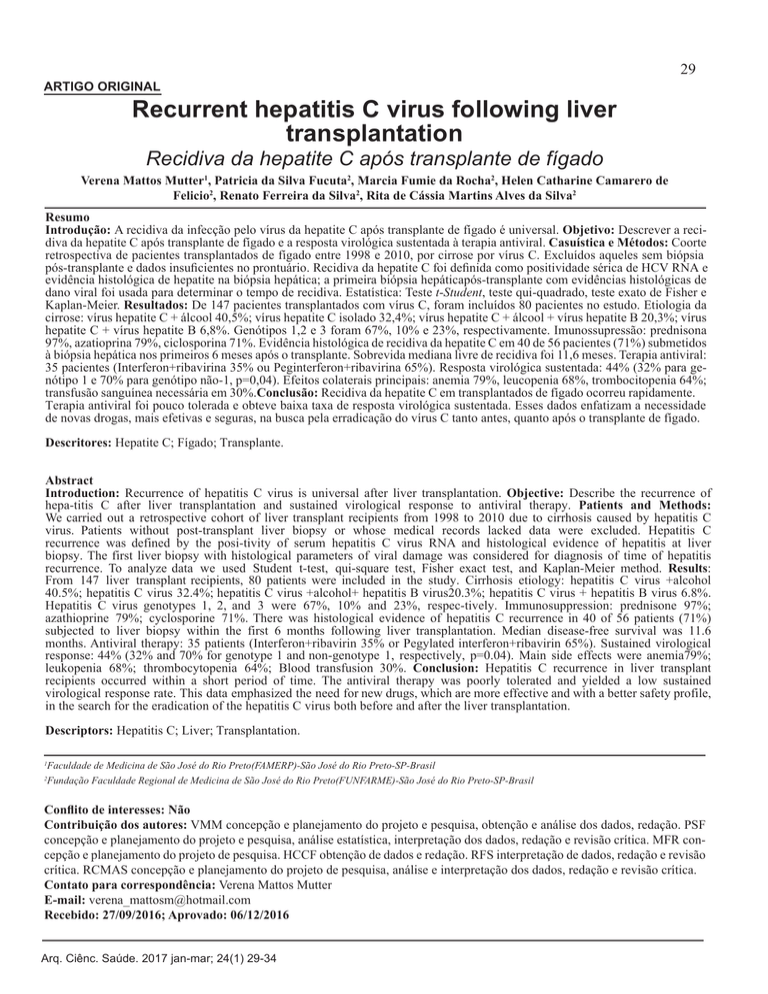
ARTIGO ORIGINAL
29
Recurrent hepatitis C virus following liver
transplantation
Recidiva da hepatite C após transplante de fígado
Verena Mattos Mutter1, Patricia da Silva Fucuta2, Marcia Fumie da Rocha2, Helen Catharine Camarero de
Felicio2, Renato Ferreira da Silva2, Rita de Cássia Martins Alves da Silva2
Resumo
Introdução: A recidiva da infecção pelo vírus da hepatite C após transplante de fígado é universal. Objetivo: Descrever a recidiva da hepatite C após transplante de fígado e a resposta virológica sustentada à terapia antiviral. Casuística e Métodos: Coorte
retrospectiva de pacientes transplantados de fígado entre 1998 e 2010, por cirrose por vírus C. Excluídos aqueles sem biópsia
pós-transplante e dados insuficientes no prontuário. Recidiva da hepatite C foi definida como positividade sérica de HCV RNA e
evidência histológica de hepatite na biópsia hepática; a primeira biópsia hepáticapós-transplante com evidências histológicas de
dano viral foi usada para determinar o tempo de recidiva. Estatística: Teste t-Student, teste qui-quadrado, teste exato de Fisher e
Kaplan-Meier. Resultados: De 147 pacientes transplantados com vírus C, foram incluídos 80 pacientes no estudo. Etiologia da
cirrose: vírus hepatite C + álcool 40,5%; vírus hepatite C isolado 32,4%; vírus hepatite C + álcool + vírus hepatite B 20,3%; vírus
hepatite C + vírus hepatite B 6,8%. Genótipos 1,2 e 3 foram 67%, 10% e 23%, respectivamente. Imunossupressão: prednisona
97%, azatioprina 79%, ciclosporina 71%. Evidência histológica de recidiva da hepatite C em 40 de 56 pacientes (71%) submetidos
à biópsia hepática nos primeiros 6 meses após o transplante. Sobrevida mediana livre de recidiva foi 11,6 meses. Terapia antiviral:
35 pacientes (Interferon+ribavirina 35% ou Peginterferon+ribavirina 65%). Resposta virológica sustentada: 44% (32% para genótipo 1 e 70% para genótipo não-1, p=0,04). Efeitos colaterais principais: anemia 79%, leucopenia 68%, trombocitopenia 64%;
transfusão sanguínea necessária em 30%.Conclusão: Recidiva da hepatite C em transplantados de fígado ocorreu rapidamente.
Terapia antiviral foi pouco tolerada e obteve baixa taxa de resposta virológica sustentada. Esses dados enfatizam a necessidade
de novas drogas, mais efetivas e seguras, na busca pela erradicação do vírus C tanto antes, quanto após o transplante de fígado.
Descritores: Hepatite C; Fígado; Transplante.
Abstract
Introduction: Recurrence of hepatitis C virus is universal after liver transplantation. Objective: Describe the recurrence of
hepa-titis C after liver transplantation and sustained virological response to antiviral therapy. Patients and Methods:
We carried out a retrospective cohort of liver transplant recipients from 1998 to 2010 due to cirrhosis caused by hepatitis C
virus. Patients without post-transplant liver biopsy or whose medical records lacked data were excluded. Hepatitis C
recurrence was defined by the posi-tivity of serum hepatitis C virus RNA and histological evidence of hepatitis at liver
biopsy. The first liver biopsy with histological parameters of viral damage was considered for diagnosis of time of hepatitis
recurrence. To analyze data we used Student t-test, qui-square test, Fisher exact test, and Kaplan-Meier method. Results:
From 147 liver transplant recipients, 80 patients were included in the study. Cirrhosis etiology: hepatitis C virus +alcohol
40.5%; hepatitis C virus 32.4%; hepatitis C virus +alcohol+ hepatitis B virus20.3%; hepatitis C virus + hepatitis B virus 6.8%.
Hepatitis C virus genotypes 1, 2, and 3 were 67%, 10% and 23%, respec-tively. Immunosuppression: prednisone 97%;
azathioprine 79%; cyclosporine 71%. There was histological evidence of hepatitis C recurrence in 40 of 56 patients (71%)
subjected to liver biopsy within the first 6 months following liver transplantation. Median disease-free survival was 11.6
months. Antiviral therapy: 35 patients (Interferon+ribavirin 35% or Pegylated interferon+ribavirin 65%). Sustained virological
response: 44% (32% and 70% for genotype 1 and non-genotype 1, respectively, p=0.04). Main side effects were anemia79%;
leukopenia 68%; thrombocytopenia 64%; Blood transfusion 30%. Conclusion: Hepatitis C recurrence in liver transplant
recipients occurred within a short period of time. The antiviral therapy was poorly tolerated and yielded a low sustained
virological response rate. This data emphasized the need for new drugs, which are more effective and with a better safety profile,
in the search for the eradication of the hepatitis C virus both before and after the liver transplantation.
Descriptors: Hepatitis C; Liver; Transplantation.
Faculdade de Medicina de São José do Rio Preto(FAMERP)-São José do Rio Preto-SP-Brasil
Fundação Faculdade Regional de Medicina de São José do Rio Preto(FUNFARME)-São José do Rio Preto-SP-Brasil
1
2
Conflito de interesses: Não
Contribuição dos autores: VMM concepção e planejamento do projeto e pesquisa, obtenção e análise dos dados, redação. PSF
concepção e planejamento do projeto e pesquisa, análise estatística, interpretação dos dados, redação e revisão crítica. MFR concepção e planejamento do projeto de pesquisa. HCCF obtenção de dados e redação. RFS interpretação de dados, redação e revisão
crítica. RCMAS concepção e planejamento do projeto de pesquisa, análise e interpretação dos dados, redação e revisão crítica.
Contato para correspondência: Verena Mattos Mutter
E-mail: [email protected]
Recebido: 27/09/2016; Aprovado: 06/12/2016
Arq. Ciênc. Saúde. 2017 jan-mar; 24(1) 29-34
30
Introduction
Cirrhosis due to hepatitis C virus (HCV) infection is the leading
indication for liver transplantation in adults in the Western countries(1).However, the recurrence of HCV infection following the
transplant is universal, and approximately 30% of these patients
develop cirrhosis within five years(2).These data contradict the
natural history of hepatitis C in non-transplant patients, in which about 10 to 20% of the patients will develop cirrhosis after
many years of infection(3-4), thus indicating the severity of such
infection in the liver transplant setting.
Recognizing characteristics both in the receptor and in the donor,
which affected the natural history of HCV infection following
liver transplant can have a great impact in the development of
strategies aimed at minimizing the problem. Even though some
clinical parameters have already been identified, there are not
still any reliable means of recognizing which patients will have
a rapid progression of the hepatic fibrosis after the transplant.
Among the variables associated with the progression of the disease after the transplant, the following ones have already been
mentioned: non-Caucasian ethnicity, high HCV viral load at
the moment of the transplant, and cumulative dose of steroids(2).
The antiviral HCV treatment for patients who were subjected to
liver transplant is, on the one hand, a priority, regardless of the
state of the fibrosis(5). On the other hand, it is a challenge considering its adverse events in this group of patients. Until recently,
the standard therapy involving interferon alfa (IFN) or Pegylated
interferon alfa (PegIFN) associated with ribavirin (RBV) was
the only one recommended, but the success rates were reported
as inferior to the ones registered in non-immunosuppressed
patients, and a low tolerance was also identified(6).
Currently, the antiviral therapy for hepatitis C is going through
important changes, and the new drugs available, such as the
DAAs (direct-acting antivirals) may represent more safety, and
efficiency scheduled therapy. These new drugs may be even
administered to decompensated cirrhotic patients waiting for
liver transplantation, although there are not widely available
data for patients with Child-Pugh C cirrhosis(5). Preliminary
results from the DAAs therapy for liver transplanted patients
are being published(7-11), but larger and more detailed studies
that have already been concluded involving these patients are
necessary before any of these new drugs are safely recommended for the different clinical situations that emerge after liver
transplantation(12).
The aim of the present study was to describe the recurrence
of HCV infection after liver transplantation, and the sustained
virological response to interferon-based therapy in a cohort of
liver transplant patients.
Patients and Methods
All medical records of HCV infected patients subjected to liver
transplantation from 1998 to 2010 at the Hospital de Base, the
University Hospital at the Medical School of Sao Jose do Rio
Preto, Sao Paulo, were analyzed. Patients with at least one liver
biopsy after the transplantation were included. HCV recurrence
after liver transplantation was defined by the positivity of serum
HCV RNA and histological evidence of hepatitis at liver biopsy.
The first liver biopsy with histological parameters of viral damage was considered for diagnosis of time of hepatitis recurrence.
The study excluded those patients without post-transplant liver
biopsy or with medical records inconsistent or missing data.
Retrospective cohort study
The following clinical and laboratory variables were analyzed:
demographic data of the receptor (age, gender) and the donor
(age), laboratory data regarding the hepatic function, the HCV
infection genotype), immunosuppression therapy, and time for
hepatitis recurrence defined as the time from transplant to the
date of histological recurrence of hepatitis C.
Histological analysis
All post-transplant biopsies were analyzed by a single experienced pathologist according to the Metavir classification criteria(13).
Protocol liver biopsies were performed yearly or for elevations in
serum transaminase levels, and according to patient compliance.
Antiviral therapy
Patients subjected to antiviral therapy received weekly subcutaneous injections of IFN alfa or PegIFN alfa 2a or 2b both
combined with daily doses of oral ribavirin. Treatment efficacy
was defined as the presence of a sustained virological response
(SVR), e.g., HCV RNA undetectable at post-treatment week 24.
The antiviral therapy efficacy was analyzed under the intention-to-treat principle.
Statistical analysis
Descriptive analysis included absolute and relative frequencies
for categorical variables, and means, medians, standard deviation, and variation for continuous variables. The normal distribution of the continuous variables was verified by analyzing the
skewness and kurtosis and applying the Kolmogorov-Smirnov
test of normality. The Student t-test was used to compare groups
of continuous variables and the chi-square test or Fisher Exact
test for categorical variables. Disease-free survival was defined
as the time from the transplant to the date of histological recurrence of hepatitis C or the date of last liver biopsy. Survival
analysis was performed using Kaplan-Meier estimator method.
P value< 0.05 was considered significant. The statistical analysis
was conducted through the IBM SPSS Statistics software for
Windows, version 18 (IBM Corporation, NY, USA).
Ethical considerations
The study respected all ethics precepts specified by the Resolution 466/12 of the National Health Council. The study protocol
was submitted to the local Ethics Committee (CEP/FAMERP)
receiving authorization under protocol number 33815/2012.
Results
From the 147 liver transplanted patients with HCV during
the period of the study, 80 were included in the study. Those
without a liver biopsy after transplantation or whose records
lacked information was excluded (67 patients). The clinical and
demographic characteristics are in Table 1.
Arq. Ciênc. Saúde. 2017 jan-mar; 24(1) 29-34
Table 1. Baseline characteristics of liver transplant recipients
(n=80) with hepatitis C recurrence. São José do Rio Preto/SP,
1998 a 2000
Patient characteristics
Age at transplantation (years)
50±10
Male gender
73%
White race
88%
Cirrhosis etiology
HCV + alcohol
40.5%
HCV
32.4%
HCV + alcohol + HBV
20.3%
HCV + HBV
6.8%
Alcoholism pre-OLT (years)
23 ±10
Alcoholic abstinence pre-OLT (months)
24 (12-156)
HCVgenotype
Genotype 1
67%
Genotype 2
10%
Genotype 3
23%
Donors age (years)
34.5 (9-67)
Pre-transplant diabetes
16%
Immunosuppression
Prednisone
97%
Azathioprine
79%
Cyclosporine
71%
Tacrolimus
47%
Mycophenolate
34%
Rapamycin
33%
Continuous variables are expressed as mean ± standard deviation or
median (range); categorical variables are expressed as proportions.
HCV, hepatitis C virus; HBV, hepatitis B virus; OLT, orthotopic liver
transplantation.
HCV recurrence after liver transplantation
Histological recurrence of hepatitis C occurred rapidly following
liver transplantation (Table 2). There was histological evidence
of hepatitis C in 40 of 56 patients (71%) subjected to liver biopsy
within the first 6 months following liver transplantation.
Table 2. Histological recurrence* of hepatitis C following liver
transplantation. São José do Rio Preto/SP, 1998 a 2000
Time
N**
First 6 months after LT
40/56
Between 6 and 12 months after LT
5/5
Between 12 and 24 months after LT
10/14
Between 24 and 60 months after LT
1/2
Above 60 months after LT
1/2
*The first liver biopsy with histological parameters of viral damage was
considered for diagnosis of time of hepatitis recurrence. **Number of
patients with histological recurrence in relation to total number of liver
biopsies performed in the period; the total number of performed liver
biopsies excludes those from patients who had already histological
recurrence in the previous period. LT, liver transplantation.
Arq. Ciênc. Saúde. 2017 jan-mar; 24(1) 29-34
31
Disease-free survival analysis
The median follow-up period from liver transplantation to the
date of histological recurrence of hepatitis C or the date of last
liver biopsy was 9.7 months (the range was from 0.3 to 62 months). Disease-free survival curve is shown in figure 2. Median
disease-free survival was 11.6 months.
Disease-free survival curve is shown in figure 1.
Figure 1. Disease-free survival according to Kaplan-Meier
method. Disease-free survival was defined as the time from the
transplant to the date of histological recurrence of hepatitis C
or the date of last liver biopsy. Each drop in a probability curve
indicates one or more events. Vertical lines indicate censored
patients. São José do Rio Preto/SP, 1998 a 2000
Antiviral Treatment
Between 1998 and 2010, thirty-five patients were subjected to
antiviral treatment with IFN+RBV (n = 12) or PegIFN+RBV
(n = 23). The baseline characteristics of the patients submitted
to antiviral treatment are in Table 3.
Table 3. Baseline characteristics of the patients submitted to
antiviral treatment (n=35). São José do Rio Preto/SP, 1998 a 2000
Patient characteristics
Age (years)
47±11
Male gender
27 (77%)
HCV Genotype
Genotype 1
22 (67%)
Genotype 2
4 (12%)
Genotype 3
7 (21%)
Continuous variables are expressed as mean ± standard deviation;
categorical variables are expressed as number (proportions). HCV,
hepatitis C virus.
The global SVR rate was 44%. Cytopenia was the main side
effect: anemia, 79%; leukopenia, 68%; thrombocytopenia,
64%. Blood transfusions were necessary in 30% of the patients.
Comparative analyses between SVR group and non-responders
group to antiviral therapy are in Table 4.
32
Table 4. Analysis of factors according to the type of treatment
response. São José do Rio Preto/SP, 1998 a 2000
Patient characteristics
SVR
NR
P
Age (years)
43 ± 11 50 ± 10 0.06
Gender
Male
12 (50%) 12 (50%)
0.41
Female
2 (25%) 6 (75%)
HCV Genotype
HCV genotype 1
7 (32%) 15 (68%)
0.04
HCV non-genotype 1
7 (70%) 3 (30%)
IFN-containing regimens
IFN + RBV
4 (36%) 7 (64%)
0.54
10 (48%) 11 (52%)
PegIFN + RBV
Continuous variables are expressed as mean ± standard deviation; categorical variables are expressed as number (proportions). SVR, sustained virological responder group; NR, non-responder group; HCV, hepatitis C virus; IFN, interferon alfa;
RBV, ribavirin; PegIFN, pegylated interferon alfa 2a.
Discussion
In this study, the HCV hepatitis recurrence occurred shortly after
liver transplantation. It has been shown in the literature HCV
reinfection of the liver transplant and hepatitis in 50% of the
patients after one year, and 100% after five years of follow-up(2).
In accordance with these data, it was observed in the present study hepatitis recurrence about twelve-month post transplantation
for half of the patients. The liver biopsies were indicated yearly
or for elevations in serum transaminase levels and according
to patient compliance; it is worth mentioning at times some
patients did not agree with liver biopsy, or in some instances,
it was impossible due to comorbid conditions. However, it is
important to note the rigorous histology analysis performed by a
single experienced pathologist allowed recurrence of hepatitis C
to be diagnosed when only histological criteria of viral damage
were present, excluding those with histological findings to other
situations such as drug-induced hepatitis or graft rejection.
The natural history of cirrhosis caused by hepatitis C after liver
transplant is unknown. An important study(14) tried to determine
predictive factors for clinical decompensation, retransplantation,
and mortality rates. All the patients were infected by HCV
genotype 1b. The variables included were: histological activity
rates after the transplant, hepatic function tests, age, gender,
and maintenance immunosuppression. The research has shown
that, in case a retransplantation is being considered, it must be
conducted very early, since a decompensation may occur. Clinical decompensation was defined as the occurrence of ascites
with or without peripheral edema, hydrothorax, varicose veins
bleeding, spontaneous bacterial peritonitis, or encephalopathy
during the follow-up.
Studies on the evolution of cirrhosis in the graft agree upon the
fact that the recurrence of HCV infection causes hepatic failure in
a great amount of patients, and the progression period is shorter
than in the non-immunosuppressed patients(15).
Several risk factors for development of recurrent chronic HCV
after liver transplantationhavebeen discussed, including recipient and donor factors. Although the HCV genotype and the
appearance of quasispecies were at times reported as relevant
factors regarding the recurrence of HCV. The lack of sufficient
sensibility and specificity of the viral factors does not allow them
to be used to determine which patients should be subjected to
liver transplant and which ones should be given a preventive
antiviral therapy. This is also true for the variables regarding the
receptor, including age, gender, and ethnicity(15). Among donor
factors, it is important to emphasize that several studies confirm
the relation between the advanced donor age with a earlier and
more severe histological progression of the HCV recurrence and
a decrease in survival of recipients(16).Even though the median
age of liver donor in the present study was 34.5 years, there was
a considerable variability with the maximum age being 67 years.
The treatment in the immediate postoperative period is tolerated,
but the efficiency is normally unsatisfactory, according to the
literature. Preventive therapy refers to the antiviral therapy that
begins within two to eight weeks after the transplant, when the
viral load is low and there are no histological damages, and it is
not adopted in the routine practice. The factors that contribute
to low response rates among the receptors of liver transplant
include: bone marrow suppression by IFN, when used in combination with immunosuppression drugs, and low tolerance to
ribavirin(17). Other factors associated with low responses are:
genotype 1, absence of premature virological response, male
gender, high basal viral load and resistance to insulin(17). In the
present study, antiviral therapy yielded a low SVR rate; data
also noticed a considerable difference in the SVR rates when
HCV genotypes 1 and non-genotype 1 was compared, which
confirmed the data provided by the literature(18). In relation to
age, there was a trend towards higher rates of SVR in younger
patients but this difference did not reach statistical significance;
the comparative analysis of SVR according to gender did not
show any relevant differences.
Side effects were frequent in this study. The most important side
effect was cytopenia and approximately one-third of patients
required blood transfusion. Similar Results were reported by
other groups(19-21). In a revision about treatment(21), almost a
third of the patients had their treatment interrupted due to this
side effect, and the others needed a dose reduction to increase
the tolerance.
Some authors defend(17) that the antiviral therapy must be offered
to all patients as soon as histological evidence of HCV relapses
is detected. Another important consideration is that, in case a
re-transplantation is being discussed, a prophylactic antiviral
therapy would be the most effective measure in order to reduce
the progression of the disease after the transplantation, and this
option is not available in clinical practice.
The new antiviral treatment for HCV was available for some
countries(5,6)and it is very likely to increase the tolerance, and the
efficiency for patients subjected to liver transplant as well(22-24).
More evidence produced by real-life studies is still to be published involving a large number of patients in this specific group
and is being widely anticipated(25). Certainly soon this treatment
will be started earlier for these patients due to better tolerance and
Arq. Ciênc. Saúde. 2017 jan-mar; 24(1) 29-34
efficacy. It is also possible to anticipate this therapeutic measure
will potentially prevent the progression to cirrhosis due to HCV
recurrence after liver transplantation and subsequently increase
survival for this group of patients.
Conclusion
Hepatitis C recurrence in liver transplant recipients occurred
within a short period of time. The antiviral therapy was poorly
tolerated and yielded a low SVR rate. This data emphasized
the need for new drugs, more effective and with a better safety
profile, in thesearch for the eradication of the HCV both before
and after the liver transplantation.
References
1. Ghany MG, Strader DB, Thomas DL, Seeff LB. Diagnosis,
management, and treatment of hepatitis C: an update. Hepatology. 2009;49(4):1335-74. doi: 10.1002/hep.22759.
2. Berenguer M, Ferrell L, Watson J, Prieto M, Kim M, Rayon M,
et al. HCV-related fibrosis progression following liver transplantation: increase in recent years. J Hepatol. 2000;32(4):673-84.
3. Alter MJ. Epidemiology of hepatitis C virus infection. World
J Gastroenterol. 2007;13(17):2436-41.
4. D’Amico G, Garcia-Tsao G, Pagliaro L. Natural history and
prognostic indicators of survival in cirrhosis: a systematic review
of 118 studies. J Hepatol. 2006;44(1):217-31.
5. European Association for the Study of the Liver. EASL
recommendations on treatment of hepatitis C 2015. J Hepatol.
2015;63:199-236.
6. AASLD/IDSA HCV Guidance Panel. Hepatitis C guidance:
AASLD-IDSA recommendations for testing, managing, and
treating adults infected with hepatitis C virus. Hepatology.
2015;62(3):932-53. doi: 10.1002/hep.27950.
7. Reddy RK, Everson GT, Flamm SL, Denning JM, Arterburn
S, Brandt-Sarif T, et al. Ledipasvir/sofosbuvir with ribavirin for
the treatment of HCV in patients with post-transplant recurrence:
preliminary results of a prospective, multicenter study. Hepatol.
2014;60:200A-1A.
8. Charlton M, Gane E, Manns MP, Brown Jr RS, Curry MP,
Kwo PY, et al. Sofosbuvir and ribavirin for treatment of compensated recurrent hepatitis C virus infection after liver transplantation. Gastroenterol. 2015;148(1):108-17. doi: 10.1053/j.
gastro.2014.10.001.
9. Mantry PS, Kwo PY, Coakley E, Te HS, Vargas HE, Brown
Jr RS, et al. High sustained virologic response rates in liver
transplant recipients with recurrent HCV genotype 1 infection
receiving ABT-450/r/ombitasvir plus dasabuvir plus ribavirin.
Hepatol. 2014;60:298A.
10. Brown RS, Reddy KRJ, O’Leary JG, Kuo A, Morelli G,
Stravitz RT, et al. Safety and efficacy of new DAA-based
therapy for hepatitis C post-transplant: interval results from
the HCV-TARGET longitudinal, observational study. Hepatol.
2014;60:1269A.
11. Leroy V, Dumortier J, Coilly A, Sebagh M, Fougerou-Leurent
C, Radenne S, et al. High rates of virological response and major
clinical improvement during sofosbuvir and daclatasvir-based
regimens for the treatment of fibrosingcholestatic HCV recurArq. Ciênc. Saúde. 2017 jan-mar; 24(1) 29-34
33
rence after liver transplantation: the ANRS CO23 CUPILT study.
Hepatol. 2014;60:207A.
12. Dall’Agata M et al. Hepatitis C virus reinfection after liver
transplantation: is there a role for direct antiviral agents? World
J Gastroenterol. 2014;20(28):9253-60. doi: 10.3748/wjg.v20.
i28.9253.
13. Bedossa P, Poynard T. An algorithm for the grading of activity in chronic hepatitis C. The METAVIR Cooperative Study
Group. Hepatol. 1996;24:289-93.
14. Berenguer M, Prieto M, RayonJM, Mora J, Pastor M, Ortiz
V, et al. Natural history of clinically compensated hepatitis C
virus-related graft cirrhosis after liver transplantation. Hepatol.
2000;32(4 Part1):852-8.
15. Mitchell O, Gurakar A. Management of hepatitis C post-liver
transplantation: a comprehensive review. J Clin Trans Hepatol.
2015;3(2):140-8. doi: 10.14218/JCTH.2015.00005.
16. Cucchetti A, Ross LF, Thistlethwaite JR, Vitale A, Ravaioli
M, Cescon M, et al. Age and equity in liver transplantation: an
organ allocation model. Liver Transpl. 2015:21(1):1241-9. doi:
10.1002/lt.24211.
17. Watt K, Veldt B, Charlton M. A practical guide to the
management of HCV infection following liver transplantation.
Am J Transplant. 2009;9(8):1707-13. doi: 10.1111/j.16006143.2009.02702.x.
18. Hanouneh IA, Miller C, Aucejo F, Lopez R, Quinn MK,
ZeinNN. Recurrent hepatitis C after liver transplantation:
on-treatment prediction of response to peginterferon/ribavirin
therapy. Liver Transpl. 2008;14(1):53-8.
19.Gitto S, Belli LS, Vukotic R, Lorenzini S, Airoldi A,
Cicero AFG, et al. Hepatitis C virus recurrence after liver
transplantation: A 10-year evaluation. World J Gastroenterol.
2015;21(13):3912-20. doi: 10.3748/wjg.v21.i13.3912.
20. Faisal N, Mumtaz K, Marquez M, Renner EL, Lilly LB.
High sustained virological response to pegylated interferon and
ribavirin for recurrent genotype 3 hepatitis C infection post-liver
transplantation. Hepatol Int. 2015;9(1):76-83. doi: 10.1007/
s12072-014-9589-6.
21. Ciria R, Pleguezuelo M, Khorsandi SE, Davila D, Suddle
A, Vilca-Melendez H, et al. Strategies to reduce hepatitis C
virus recurrence after liver transplantation. World J Hepatol
2013;5(5):237-50. doi: 10.4254/wjh.v5.i5.237.
22. Saab S, Greenberg A, Li E, Bau SN, Durazo F, El-Kabany M,
et al. Sofosbuvir and simeprevir is effective for recurrent hepatitis C in liver transplant recipients. Liver Int. 2015;35(11):2442-7.
doi: 10.1111/liv.12856.
23. NakamotoS, Kanda R, Shirasawa H, Yokosuka O. Antiviral
therapies for chronic hepatitis C vírus infection with cirrhosis. World J Hepatol. 2015;7(8):1133-41. doi: 10.4254/wjh.
v7.i8.1133.
24. Bailly F, Pradat P, Virlogeux V, Zoulim F. Antiviral therapy
in patients with Hepatitis C virus-induced cirrhosis. Dig Dis.
2015;33(4):613-23. doi: 10.1159/000375359.
25. Rein DB, Wittenborn JS, Smith BD, Liffmann DK, Ward
JW. The Cost-effectiveness, health benefits and financial costs
of new antiviral treatments for hepatitis c virus. Clin Infect Dis.
2015;61(2):157-68. doi: 10.1093/cid/civ220.
34
Verena Mattos Mutter é médica graduada pela Faculdade de
Medicina de São José do Rio Preto(FAMERP). E-mail:
[email protected]
Patricia da Silva Fucuta é médica e doutora em Ciências pela
Universidade Federal de São Paulo(USP). E-mail:
[email protected]
Marcia Fumie da Rocha é médica e mestranda do Programa
de Pós- Graduação em Psicologia e Saúde da Faculdade
de Medicina de São José do Rio Preto(FAMERP). Email:
[email protected]
Helen Catharine Camarero de Felicio é enfermeira, mestre em
Ciências da Saúde pela Faculdade de Medicina de São José do
Rio Preto(FAMERP). E-mail: [email protected]
Renato Ferreira da Silva é médico, professor livre docente
do departamento de Cirurgia e Chefe da Unidade de
Transplante de Fígado do Hospital de Base(FUNFARME
–FAMERP). E-mail: [email protected]
Rita de Cássia Martins Alves da Silva é médica, professora
doutora do departamento de Clínica Médica, Hepatologista
Coordenadora da Unidade de Transplante de fígado e do
Ambulatório de He-patites Virais do Hospital de
Base(FUNFARME
–
FAMERP).
E-mail:
[email protected]
Arq. Ciênc. Saúde. 2017 jan-mar; 24(1) 29-34

